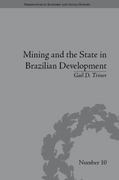This assignment does not use real world data; it involves solving a model similar to that in lectures. We use the following terminology in this part: aggregate income Y and disposable income Yd (2 (1 t)Y), consumption function C(Yd), planned investment function I (7'), government spending G, and taxation T : tY where t is the marginal tax rate; r% denotes the real interest rate in the economy. (Note, 1" is in percentage points, e.g. *r = 2 means the interest rate is 2%. When doing calculations, the interest rate should not simply be inserted in decimal form. For example, if T = 5 then I(5) = 52 0.2 x 5 : 51.) Consider a hypothetical economy where: 00%) = 58 + 0.6 X Yd I(r) = 5202 x r G = 180 t = 0.4 (represents 40%) 1. Using the information above, write out the planned Aggregate Expenditure equation. (Hint: Remember that this takes the form of AE : . . . .) 2. Write down an expression for the Investment-Savings (I 3) Curve. (Hint: First use the AE equation to nd an expression for equilibrium Y. Next, remember that the IS equation takes the form of r = ....) 3. Assume that ination is zero, so that i : r. This economy's central bank follows a given Monetary Policy Rule: 7' = 1' = 0.02 x Y + 0.05 X P , where P is the price level. Given this and the expression for the I 5 Curve, write down an expression for the Aggregate Demand Curve. (Hint: Remember that the AD Curve takes the form P : . . . .) 4. Suppose that the price level (P) is 20. What is the equilibrium value of aggregate income, Y? (Hint: use the AD equation.) 5. What are the equilibrium values of the interest rate, 'r', and investment, I? (Hint: use the MPH or IS, and H1") equations.) 6. Suppose that the level of Government expenditure increases to G = 200. What is the equi- librium value of aggregate income, Y? (Note: you will no Ionge'.r get a round number for Y.) 7. What are the new equilibrium values of the interest rate, 1', and investment, I? 8. Discuss why how the increase in G impacts Y, 'r and I in the context of the ideas of scal stimulus, spending multipliers, and crowding-out







